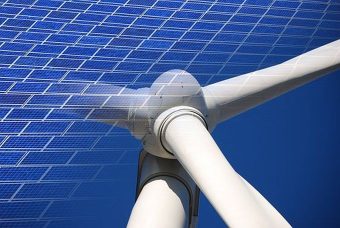
Australia’s 2020 Renewable Energy Target is potentially within grasping distance, according to the country’s Clean Energy Regulator, as long as the current pace of investment continues throughout the rest of 2017.
The Australian Clean Energy Regulator tabled its new report last week, Tracking towards 2020: Encouraging renewable energy in Australia, in which it outlined the administration of the Renewable Energy (Electricity) Act 2000 — specifically, the Renewable Energy Target of sourcing 33,000 gigawatt-hours of large-scale renewable energy by 2020 — for the 2016 calendar year. The report concluded that the “2020 Large-scale Renewable Energy Target remains achievable provided the current pace of investment continues in 2017.” Further, according to the Regulator, progress was better at the end of 2016 than it was at the beginning, and “good momentum” carried through into early 2017.The reason for the increased optimism over 2016 was the “risk that future supply of certificates might fall below total demand diminished in the course of the year.”
A significant number of new renewable energy projects were announced in 2016, with more new large-scale renewable power generation financed than in any previous year. However, while it was a good year, it was not the year that the Regulator predicted the country needed. In its 2015 annual statement, the Clean Energy Regulator said that for progress to be satisfactory, a total capacity of committed new build in 2016 needed to be around the 3 gigawatts (GW) mark. Only 1,350 megawatts (MW) of new capacity was committed, however, with another 719 MW sufficiently advanced to count as probable.
Moving forward will be like walking a tight-rope if the country is to reach its target, though. Supply and demand “will be tightly balanced in the 2018 compliance year” and an estimated 3 GW will need to be committed in 2017, and a further 1 GW in 2018. Given that 2016’s new build capacity only accounted for around one-third of the new capacity required to deliver the 2020 target, the country now requires significant political support and industrial will to reach the target.
“The generation capacity of these new projects announced increased fivefold in 2016 compared to 2015 to more than 2000 megawatts,” said Mark Williamson, Executive General Manager of the Clean Energy Regulator. “The momentum we saw in the second half of 2016 has continued into 2017. Already we have one-third of the total build required for 2017 achieved in the first three months of the year with a further 1074.5 megawatts firmly announced by end-March.”
“This demonstrates that Australia is now in a strong position to meet the 2020 Renewable Energy Target,” Mr Williamson added, though it could be said he was feeling a little optimistic at the time, given the current climate of Australia’s energy and environmental political landscape.
Nevertheless, there has been some measure of policy certainty provided, and the authors of the report note that “Settled policy for the 2020 target has contributed to an improved investment environment, and the pipeline of potential projects remains in excess of the level required to meet the target.” The only issue remains being able to extract those projects from the pipeline and deliver them on time so that the renewable energy certificates will be available to electricity retailers to meet their obligations in the coming years.
Source: cleantechnica.com
